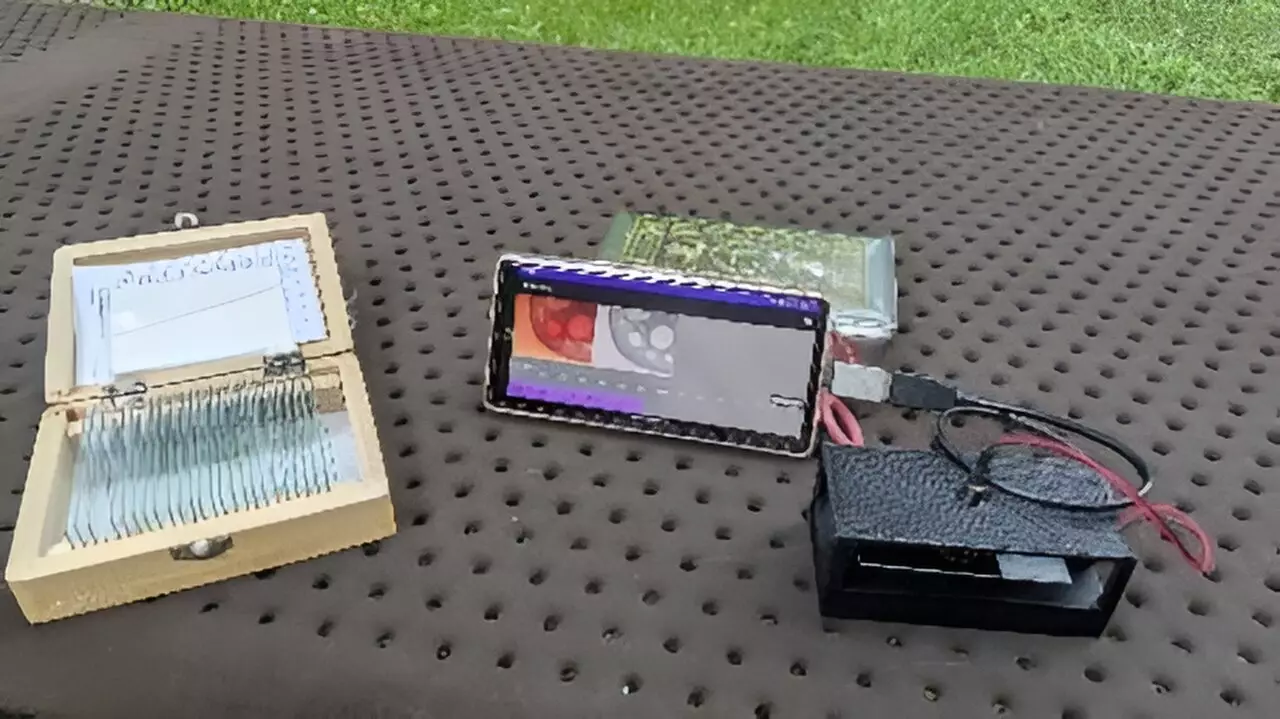Recent advancements in optical technology have birthed a game-changing tool in the realm of microscopy—the smartphone-based digital holographic microscope. Developed by a team led by Yuki Nagahama at the Tokyo University of Agriculture and Technology, this new instrument significantly enhances the accessibility and practicality of 3D measurement capabilities across diverse fields. With a design grounded in simplicity and affordability, this portable microscope can seamlessly shift from educational environments to medical applications in resource-scarce areas, effectively bridging the gap between high-tech diagnostics and everyday usability.
The Mechanics of Digital Holographic Microscopy
Digital holographic microscopy represents a revolutionary approach to analyzing microscopic samples by recording the interference patterns of light scattered from objects. Unlike traditional methods, which often necessitate sophisticated optical setups and external processing units like PCs, this novel microscope integrates a smartphone to perform real-time holographic reconstruction. The fundamental process involves capturing holograms generated from a reference beam mixed with light from the sample, which are then transformed into detailed 3D representations. Such advances not only expand the scope of applications but also democratize access to high-quality imaging tools.
One of the standout features of this smartphone-based microscope is its user-friendly interface. Users can manipulate their visualization of samples with simple gestures, such as pinching their screens for zoom functionality. This interactive capability not only enhances the user experience but also makes the microscope suitable for educational purposes—from classrooms to home experimentation. Remarkably, the microscope can operate in varying contexts, including outdoor settings, owing to its compact and lightweight construction facilitated by 3D printing techniques.
The potential applications of this technology are immense, particularly in the medical field. In regions with limited access to advanced diagnostic tools, such as developing countries, this microscope could revolutionize the early detection and management of diseases. For instance, it holds promise in diagnosing conditions like sickle cell disease, where rapid and accurate identification can lead to timely interventions. By lowering the barrier to entry for sophisticated imaging, healthcare professionals can deploy this tool to address pressing health challenges in under-resourced environments.
The authors of this research were cognizant of the limitations posed by the computational and memory constraints typically found in smartphones. To counteract these challenges, the team employed a technique known as band-limited double-step Fresnel diffraction which optimizes the data processing involved in holographic image reconstruction. This innovative strategy enables the microscope to achieve frame rates of up to 1.92 frames per second, allowing for near real-time visual feedback while observing stationary samples. Consequently, researchers can gather critical data almost instantaneously, paving the way for responsive decision-making in both educational and clinical settings.
Looking forward, the research team envisions integrating deep learning technologies to elevate the quality of the images produced by the digital holographic microscope. Current iterations may inadvertently generate false images during the reconstruction process, which could obscure critical details necessary for accurate analyses. By applying deep learning algorithms, the researchers hope to refine the imaging process, eliminating noise and enhancing clarity. This advancement could significantly broaden the microscope’s applicability, making it a staple in schools, research labs, and clinics.
The educational implications of such technology are profound. By allowing students to engage with real-time data collection and instilling practical imaging skills, this microscope can foster a deeper understanding of the microscopic world. Beyond higher educational institutions, the portability and affordability of the microscope make it suitable for scientific outreach programs, bringing hands-on learning experiences to a broader audience.
The newly developed smartphone-based digital holographic microscope embodies a pivotal advancement in scientific instruments, blending high-tech features with everyday accessibility. By harnessing the power of smartphone technology and cutting-edge imaging methods, researchers have crafted a tool that not only enhances precision in measurement but also democratizes advanced scientific exploration. As development continues, the promise of this microscope extends into the realms of healthcare and education, offering an innovative solution that could redefine how we approach diagnostics and learning in today’s technology-driven world.


Leave a Reply